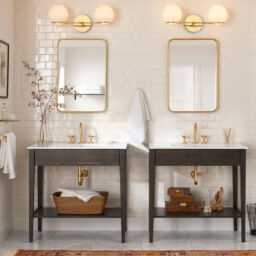Anyone perusing through the websites looking for lighting fixtures to decorate their homes with may be tempted to choose a style known as Transitional Lighting. The smooth curves and solid foundation of the fixtures of the Transitional Lighting style make it a popular choice with designers today. But for anyone trying to actually define Transitional Lighting for a friend might be surprised to find that there are few words to describe this elusive style.
Part of the problem with describing or defining the Transitional Lighting style is that it is a mixture of several styles. Combining the smooth, flowing lines of the Contemporary Style with the ornamentation of the Classic Style, Transitional Lighting is a child without a clearly defined pedigree. As a style unto itself, the Interior Design industry does not really recognize Transitional Lighting as a separate style. Transitional Lighting appears to be more of a “commercial term” that helps them clarify the class of lighting fixtures that aren’t quite Traditional but still not Contemporary either. Thus, for anyone scouring the net for information on Transitional Lighting will come across one of two possibilities:
1) they will come across a host of sites trying to sell you Transitional Lighting fixtures without ever really explaining the design characteristics of the style itself, or
2) they will learn that Transitional Lighting refers to a slow but progressive increase or decrease in the illumination between one place to another that reduces glare.
Neither of these search outcomes get you any closer to understanding the nature of Transitional Lighting. A close inspection of websites devoted to architecture and interior design reveals that theses sites do not truly recognize the Transitional Lighting style in and of itself. Any style that blends different aspects of separate styles is generically referred to as “Transitional”. Therefore, what might be considered as Transitional Lighting by one person would not necessarily be done so by another. This fact is demonstrated when one looks at the various manufacturers and retailers and sees the wide variety of Transitional Lighting fixtures from which to choose. Clearly, the category itself has become a sort of “catch-all” to describe and sell fixtures that don’t fit conveniently into any formal design style.
What may be said of Transitional Lighting in a formal sense is that it is generally referred to as a “feminine” style due to the smooth lines that typify most fixtures of this variety. The square foundation of the style was borrowed from the Mission Lighting style and helps differentiate Transitional Lighting fixtures from those of the Contemporary Style. Those wanting a “comfortable feel” in their homes typically choose the Transitional Style as it has a warmer feel than the Contemporary Style but not quite as formal as the Classic or Traditional Style.
Transitional Lighting is indeed difficult to really define but its synthesis between the elegance of the old and the sterility of the contemporary makes it a functional yet creative style to choose when decorating your home.
AUTOPOST by BEDEWY VISIT GAHZLY



